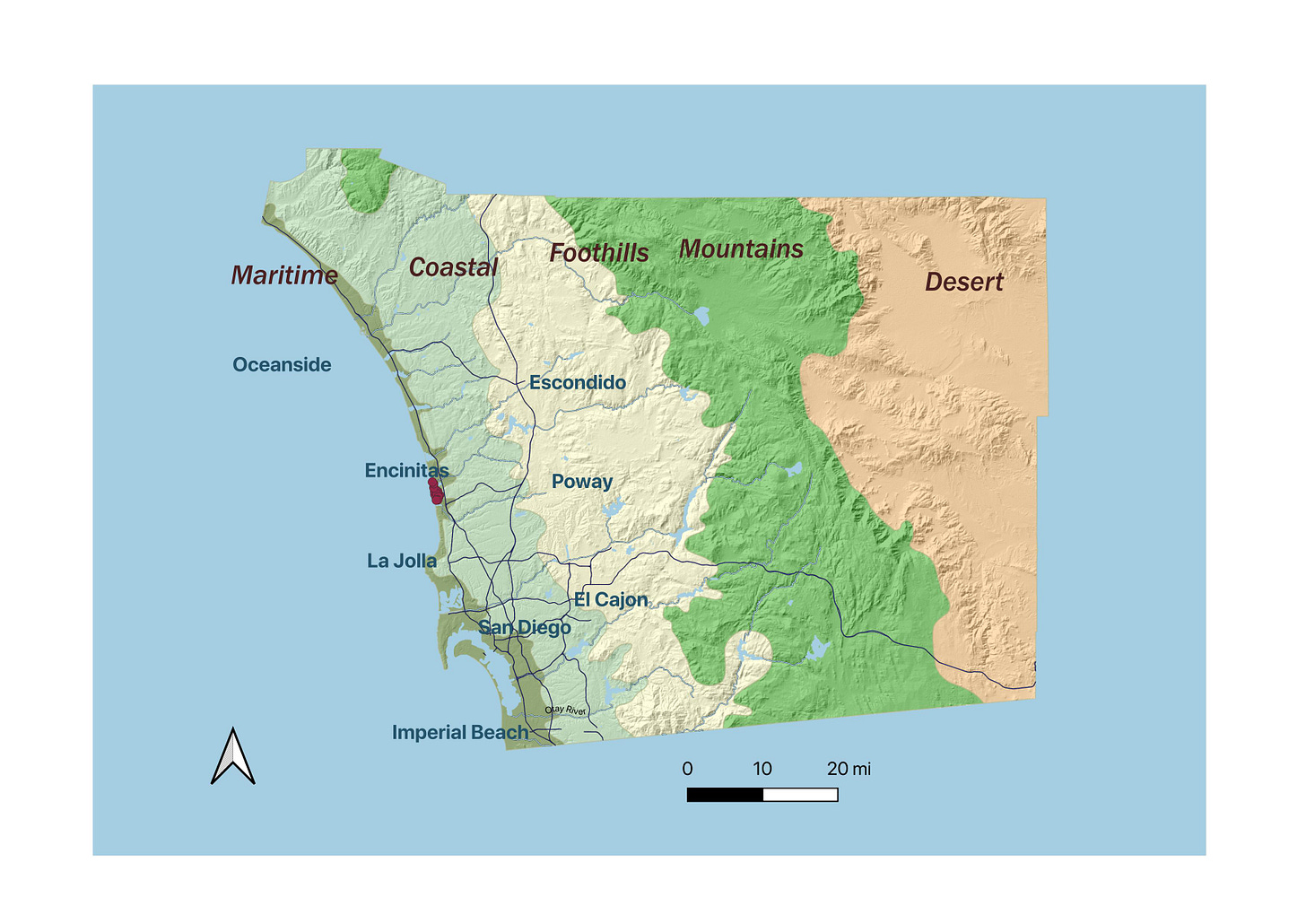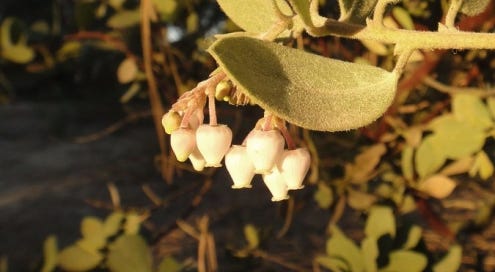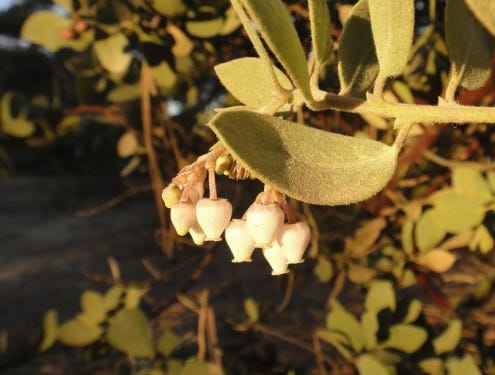In touch: Del Mar manzanita
This plant native to Southern California is rare, endangered, and beautiful.
The Endangered Species Act at 50
Yesterday was the 50th anniversary of the Endangered Species Act (ESA) being signed into law. There have been great successes in this half century. Despite repeated onslaughts, mostly from the right and the GOP, to water down and weaken the provisions of the ESA, the law has remained relatively intact. It is estimated that close to 400 species have avoided extinction thanks to the ESA. And almost 40 species have recovered to such an extent that they no longer need ESA protections. You can see the good that the legislation has done. Bald eagles now soar over great swaths of the U.S., and brown pelicans glide along coastal waters. There are also sad failures. Earlier this year, the U.S. Fish & Wildlife Service delisted 21 species from the ESA because they had gone extinct.
Noting this very important anniversary, I was prepared to write more of the successes and failures of the ESA. But as a lot of ink and computer screen pixels are already noting the occasion, I thought the best way to commemorate this anniversary was to publish another “In touch” posting, in which I share my experiences with an endangered species. This week I’ve chosen to look at the Del Mar manzanita, one of the endangered plants that is federally listed with the ESA.
In touch: Del Mar manzanita
For me, living in California has meant falling in love with manzanita. There are over 60 species of manzanita native to the Golden State. All of them, at least all the ones that I have seen, are beautiful. Their gnarly and coppery, red-barked limbs climb skyward, as though these shrubs and small trees have been shaped and sculpted by a bonsai master. Their evergreen ovate leaves can be emerald green or a blue-gray hue. Their bell-like flowers, pink, cream, and rose, dangle upside down and are favorites of hummingbirds.
Many manzanita species are quite rare, found only in small ecological pockets. Otay manzanita is thought to only grow in San Diego County, restricted almost exclusively to the Otay Mountains in the county’s southern extent. The Little Sur Manzanita hugs a slim portion of California’s coastline, from Monterey 30 miles south to Big Sur.
A subspecies of the eastwood manzanita, which is widely distributed in the state of California, the Del Mar manzanita (Arctostaphylos glandulosa ssp. crassifolia) occupies a limited area of coastal San Diego County in and around the tony beach town of Del Mar. It prefers to take root in the sandstone terraces along that stretch of coast. This member of the heath family is listed both federally and by the state of California as an endangered species. In 1982, biologists and conservationists estimated there were only about 16,600 to 17,600 of these manzanitas in about 21 populations.


The educated guess is that there were more Del Mar manzanitas before the early eighties assessment, but habitat loss has reduced their numbers and continues to threaten them. In 1991, the U.S. Fish and Wildlife Service estimated that 82 percent of Southern California’s maritime chaparral, the plant community of the Del Mar manzanita, had been converted to farms and urban sprawl. People also clear chaparral away from their homes and other buildings for fire safety. Clearing away the chaparral means clearing away manzanita as well.
Because of climate change and people being careless with cigarette butts, outdoor grills, and other very hot items, we have more fires in Southern California than in past times. Although adapted to surviving fires that recur with some frequency (Manzanitas resprout from burls after the above-ground portion of the plant is consumed by fire), if fires recur too frequently for the manzanitas to replenish their burls or to produce a sufficient amount of seeds, they will die out.
Invasive species, in particular nonnative grasses, crowd native plants like manzanita. When the grasses dry up in the summertime, they also increase fire risk. Eucalypti from Australia crowd out chaparral, and substances in their bark and leaf litter diminish the ability of chaparral plants to germinate. Vegetation is almost nonexistent underneath an adult eucalyptus in Southern California. The more eucalypti you see in Southern California, the fewer manzanitas there will be.
My personal experience gardening with Del Mar manzanita is restricted to one small plant at the zoo where I work. The soil it had been planted in is largely clay, quite different from the quick-draining sandstone soils in the Del Mar area where these manzanitas thrive. It never grew much and only flowered once in about six or seven years. When it got a heavy infestation of mourning cloak butterfly caterpillars—I’m guessing here, could have been another kind of caterpillar; I’m a plant guy, not a bug guy—it never recovered. I left the plant alone for a long time after, hoping that it would resprout from a burl, but no luck. Currently, the zoo has no manzanita of any kind growing on its grounds.
If you want to appreciate Del Mar manzanita in its natural habitat, visit the Torrey Pines State Reserve. Besides the very rare and striking Torrey pines, you are almost guaranteed to bump into a Del Mar manzanita, particularly in the northern extension of the reserve. The plant is endangered, but it grows in spades in the preserve!






The threats to wildlife are like a broken record, aren't they? Habitat destruction, invasive species, climate change. (Sometimes we can add overhunting to the mix, but in the U.S. that was more of a nineteenth century thing.) A broken record yet we must keep on playing it to remind ourselves that protecting natural systems remains largely within our control. Supporting the Endangered Species Act is a choice that we must keep on making.